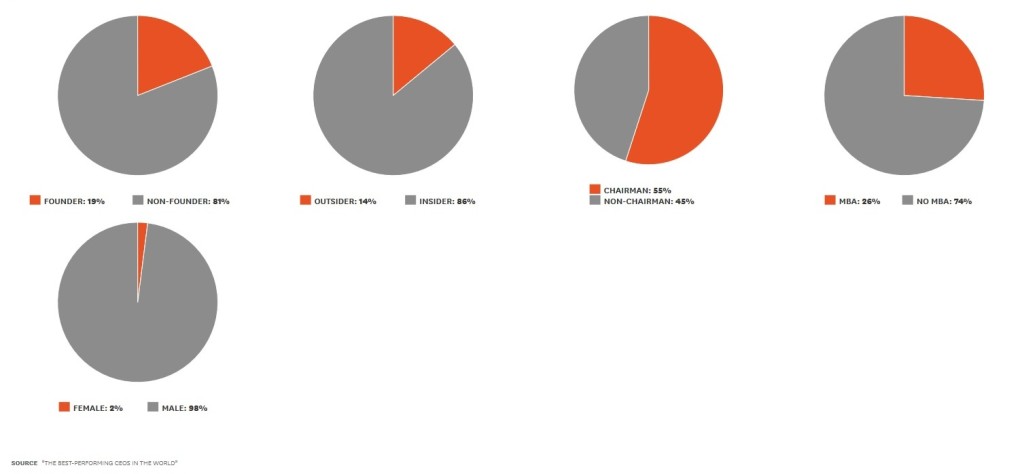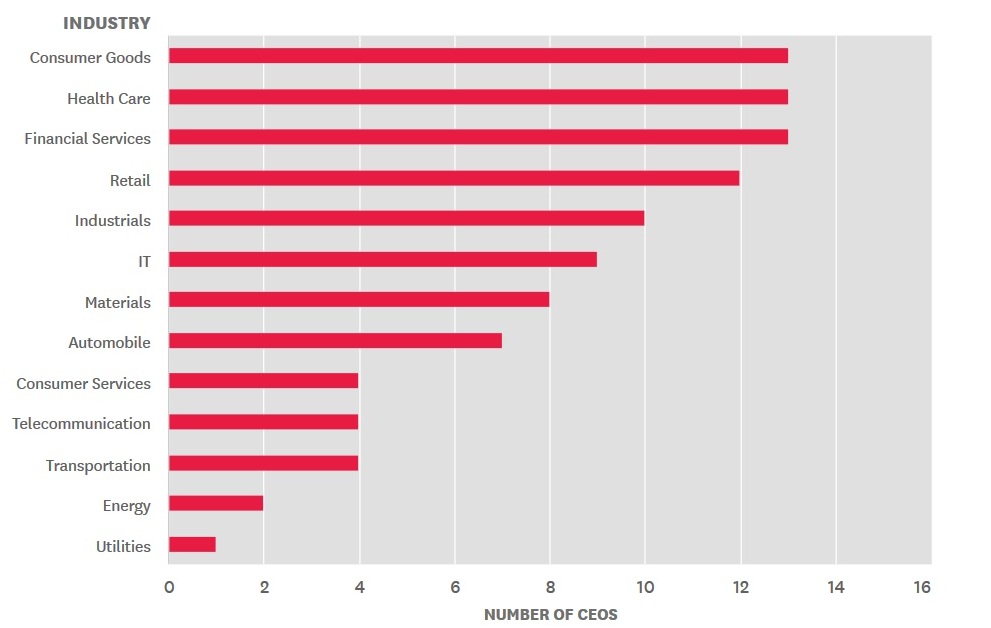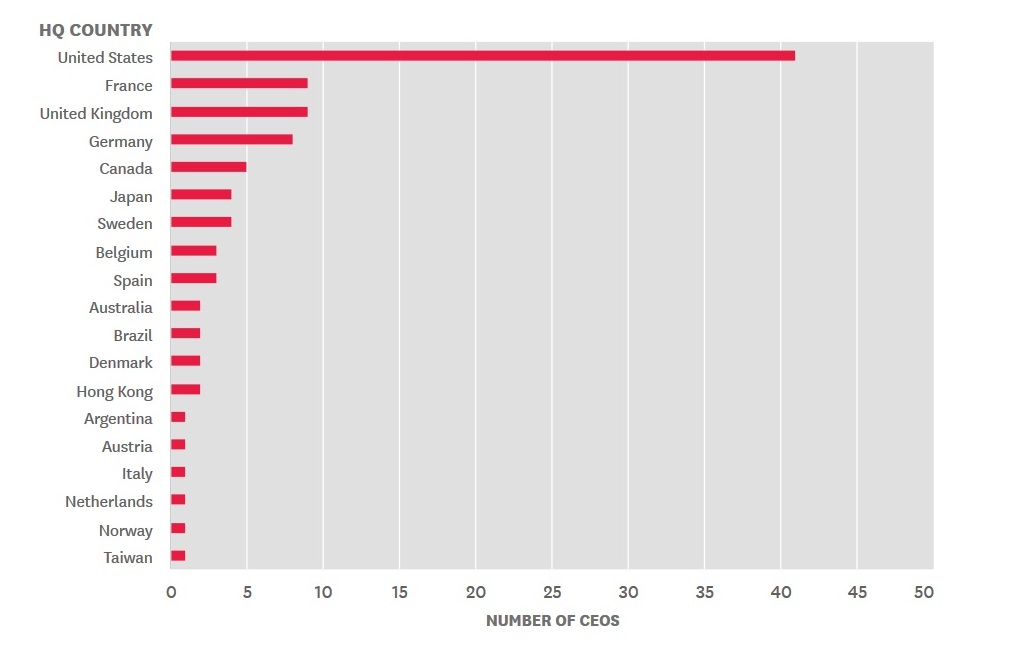The world’s top-performing CEO isn’t a household name. In fact, Lars Rebien Sørensen doesn’t even look like a big-time global executive. We recently traveled to the quiet town of Ridgefield, Connecticut, to meet with the CEO of the Danish pharmaceutical giant Novo Nordisk at his lakefront summer home. He met us in shorts, sandals, and a polo shirt, dressed for a bike ride later that day.

How did this mild-mannered, bespectacled executive land in the #1 spot on our list? It’s partly due to his company’s (darkly) fortuitous decision years ago to focus almost exclusively on diabetes treatment. The runaway global growth of the disease has driven up the company’s sales and stock price.
But his standing also reflects Novo Nordisk’s deep engagement with social and environmental issues, which now factor in to our calculations. “Corporate social responsibility is nothing but maximizing the value of your company over a long period,” says Sørensen, who has been with the company for 33 years. “In the long term, social and environmental issues become financial issues.”
Top 10 –
HBR’s ranking of CEOs is meant to be a measure of enduring success. We track and analyze each CEO’s performance starting from day one of his or her tenure. Our goal is to create a list that gets beyond the most recent quarterly or even annual results and truly evaluates long-term performance.
In the past, our ranking was based exclusively on hard stock market numbers. We looked at total shareholder return, as well as the change in each company’s market capitalization.
We liked the fact that the ranking was based solidly on data and not on reputation or anecdote. Yet it also felt incomplete, because it failed to account for the many aspects of leadership that go beyond mere market performance.
And so this year we’ve tweaked things. We’ve added to the mix a measurement of each company’s environmental, social, and governance (ESG) performance. For this we relied on the calculations of the investment research firm Sustainalytics. We now weight long-term financial results at 80% and ESG performance at 20%.

We’ve also changed our methodology to include CEOs who took the reins before 1995. In the past we had excluded those executives because data for one of our metrics—industry-adjusted returns—wasn’t available that far back. For this year’s list, we’ve analyzed the performance of those CEOs as well, using the returns generated from 1995 onward.
As a result of these shifts, the 2015 list is very different from last year’s. On the purely financial metrics, Amazon’s Jeff Bezos leads all other CEOs—just as he did last year. But Amazon’s relatively poor ESG score drags Bezos down to #87 overall. Sørensen finished sixth in overall financial performance; that, combined with a relatively high ESG rating, earned him this year’s top slot.
Why does Novo Nordisk score so high on ESG? According to Sustainalytics, the company benefits from, among other things, its decision to offer insulin at a steep discount to consumers in developing countries; its transparent and limited political lobbying practices; and its responsible policy on animal testing.
The decision to add CEOs who began prior to 1995 also shook up our ranking. About one-quarter of this year’s top 100 started the job before then, meaning they all are new to the list.

Of course, when you produce a list like this, there’s a risk that events will overtake things. For instance, Volkswagen’s Martin Winterkorn is #20 in this year’s ranking. Shortly before press time, he resigned, taking the fall for the VW’s emissions-cheating scandal. Sustainalytics has since downgraded the company’s ESG score.
At HBR we continue to experiment with the perfect measure of a CEO’s worth, and we look forward to getting our readers’ input. Are we right to include these critical, but less easily quantifiable, measures? Are there further ways of fully evaluating companies and their CEOs?
Who had the best unadjusted financial performance?
Our view is that, in an era of big data and greater transparency, consumers and investors increasingly want to understand a company’s culture and values. They want to analyze its social behavior, not just its share price. These new measurements will only get better over time.
As for Sørensen, he’s happy to be scored in all aspects of the job. In fact, he dismisses the purists who argue that “the business of business is business.” As Sørensen puts it, “I would change that to say the business of business is business—but with a long-term perspective.” And in that calculation, social and environmental issues are critical.
How We Calculated the Ranking
To compile our list of the world’s best-performing CEOs, we began with the companies that at the end of 2014 were in the S&P Global 1200, an index that comprises 70% of the world’s stock market capitalization and includes firms in North America, Europe, Asia, Latin America, and Australia. We identified each company’s CEO as of April 30, 2015. To make sure we had a sufficient track record to evaluate, we excluded people who had been in the job for less than two years; we also excluded any executive who had been arrested or convicted of a crime. All told, we ended up with 907 CEOs from 896 companies. (Several companies had co-CEOs.) Those executives represented 46 nationalities and ran enterprises based in 30 countries.
Our research team, which was headed by Nana von Bernuth and Hyunwoo Park and assisted by coders Christina von Plate and Phachareeya Ratchada, gathered daily financial data for each company from Datastream and Worldscope, from the CEO’s first day on the job until April 30, 2015. (For CEOs who took office before 1995, we calculated returns using a start date of January 1, 1995, because industry-adjusted returns prior to then were unavailable.) For each CEO’s tenure, the researchers calculated three metrics: the country-adjusted total shareholder return (including dividends reinvested), which offsets any increase in return that’s attributable merely to an improvement in the local stock market; the industry-adjusted total shareholder return (including dividends reinvested), which offsets any increase that results from rising fortunes in the overall industry; and change in market capitalization (adjusted for dividends, share issues, and share repurchases), measured in inflation-adjusted U.S. dollars.
We then ranked each CEO—from 1 (best) to 907 (worst)—for each financial metric and averaged the three rankings to obtain the CEO’s overall financial rank. Incorporating three metrics is a balanced and robust approach: While country-adjusted and industry-adjusted returns risk being skewed toward smaller companies (it’s easier to get large returns if you start from a small base), the change in market capitalization is skewed toward larger companies.
To measure CEOs’ performance on nonfinancial issues, HBR consulted with Sustainalytics, a leading provider of environmental, social, and governance research and analytics. Sustainalytics, which works primarily with financial institutions and asset managers, rates firms’ ESG performance on a scale from 0 to 100. Using the Sustainalytics data, we ordered the 907 CEOs from best to worst ESG scores to arrive at their ESG ranking.
To calculate the final ranking, we combined the overall financial ranking (weighted at 80%) and the ESG ranking (weighted at 20%).
HBR’s list of best-performing CEOs was conceived by Morten T. Hansen, Herminia Ibarra, and Urs Peyer. Previous rankings were published in our January–February 2010, January–February 2013, and November 2014 issues, but the methodology has been updated for the 2015 list.
The article was taken from here.


Pingback: Two Alberta CEOs win thousands in investment at national pitch competition - SLSV - A global media & CSR consultancy network